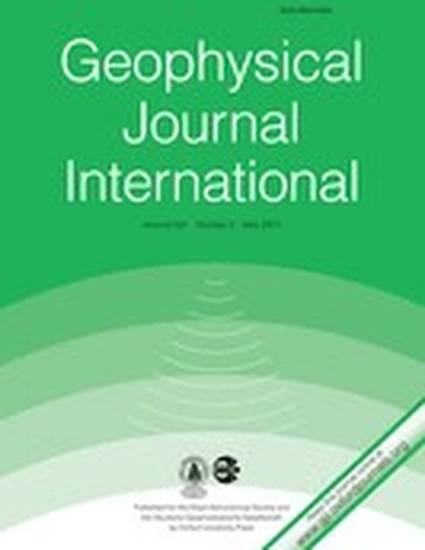
- Palaeomagnetism applied to tectonics,
- Palaeomagnetism applied to geological processes,
- Remagnetization,
- Continental tectonics: compressional
The Internal Sierras (IS) in the southern margin of the Western and Central Axial Zone (Southern Pyrenees) are affected by a syn-orogenic remagnetization that provides information to reconstruct deformation geometries at the time of acquisition of magnetization. Furthermore, the IS structure changes strike along its structural trend, from ∼N120 to 130°E in the western and eastern margins to ∼N070–090°E in the central part. Palaeomagnetic techniques have been used to (i) accurately define the timing of remagnetization with regard to deformation and (ii) determine if the along-strike trend variation in the IS was induced by deformation and thrust emplacement during the Pyrenean compression or, on the contrary, was the result of a primary orientation controlled by structures inherited from pre-orogenic times. From 23 new palaeomagnetic sites, collected in Upper Cretaceous marls and marly limestones, two meaningful and stable palaeomagnetic components were resolved, principally carried by magnetite: (1) a lower-temperature component (B) that unblocks between 200 °C and 325–400 °C and (2) a higher-temperature component (C) that has been successfully isolated by means of combined thermal (up to 400 °C) and AF demagnetization (generally up to 50–100 mT). The B component is a late remagnetization that post-dates folding and emplacement of basement thrust sheets in the IS (mainly the Gavarnie thrust). It supports small but statistically significant clockwise rotations in the western part of the IS (from +18 to +26°). These rotations can be attributed to the westwards shortening decrease in the thrust system below the Gavarnie unit that results from its along-strike structural change, with a higher number of basement thrusts to the east. The C component has been interpreted as an early remagnetization, based on the results of conglomerate and fold tests. This component predates basement thrusting and is diachronous across the study area: reverse and normal polarities dominate in the eastern and western margins of the IS, respectively. New and previous palaeomagnetic data point out that curvature in the IS is probably a primary feature and the along-strike change in their trend could be interpreted as the result of basement geometrical features inherited from Variscan, Late Variscan or Mesozoic times. A complex, multi-episodic remagnetization probably related to burial and deformation processes occurred during Eocene times.
